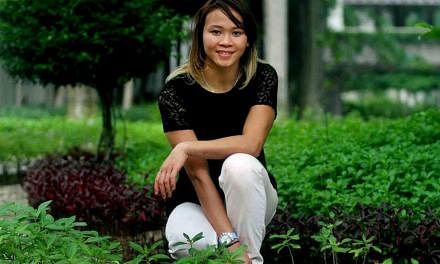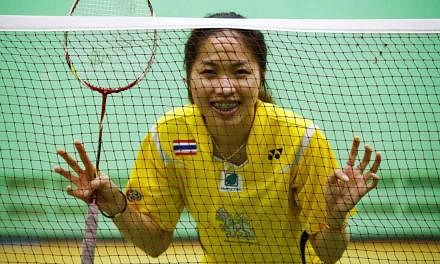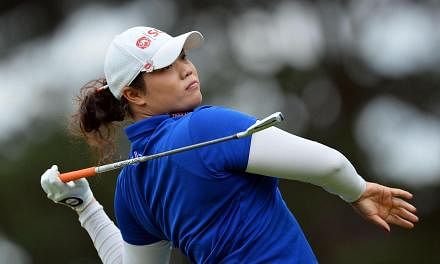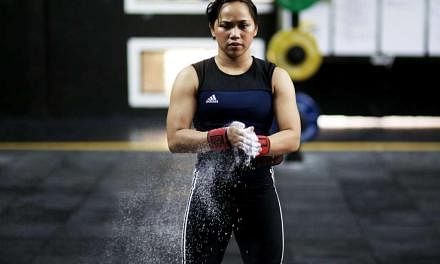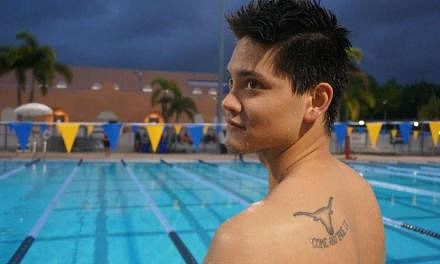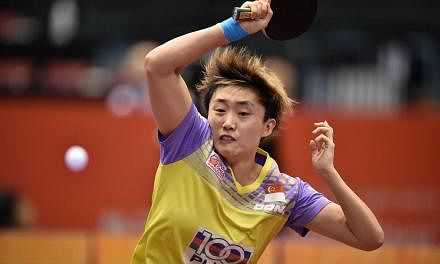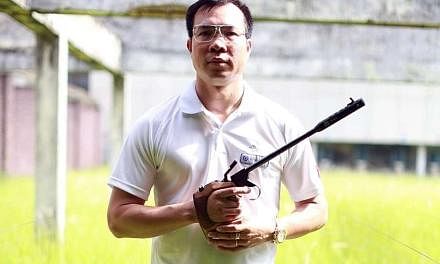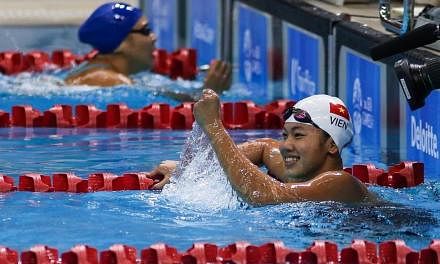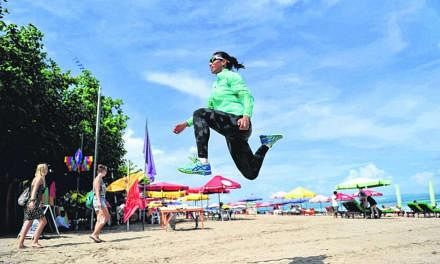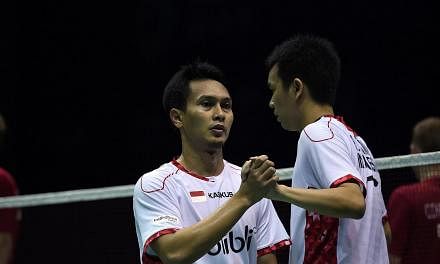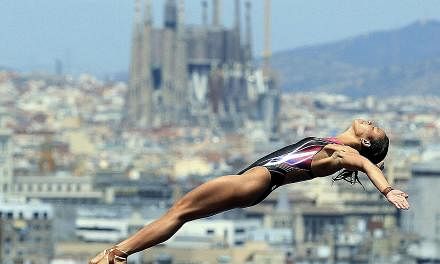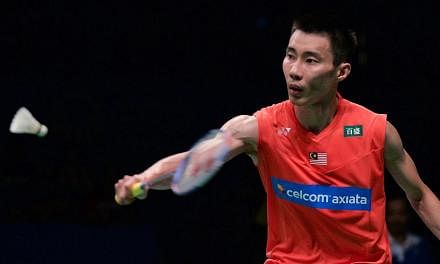-
TALE OF THE TAPE

HIDILYN DIAZHER BEST 213kg
LONDON 2012 BRONZE 219kg
HER TARGET 225kg
HER CHANCES
I don't want to talk about it, till I already have a medal in my hand. All I can say is that I'm doing my best. That's how I deal with pressure.
Olympics Rio 2016
Uplifting high hopes
In likely final Games, Philippine lifter is medal prospect; where once cousins inspired her, another now emulates her

Three times in 2012, Hidilyn Diaz tried to lift 118kg of iron and steel in the clean and jerk, and each time she had to let go before she could hold it over her head. It was just too heavy for the barely 1.52m tall weightlifter.
It was her second Olympics. She was one of just a dozen athletes the Philippines managed to send to London. Her first, four years earlier in Beijing, ended with a promise. London ended with three disappointing letters: DNF - Did Not Finish.
London was a hurried affair. She had only a month and three weeks to prepare; before that, she was still at a local competition. She found herself cramming inside an empty hall in Guildford, near the British capital, where she trained mostly on her own.
In hindsight, carrying the Philippine flag at the London opening ceremony might have been another wrong call. "Of course, I was proud. But I felt everyone was looking at me. I felt their expectations, and the pressure that went with it," she said.
Next month, she will get to march behind the flag - as woman paddler Ian Lariba has been given the honour.
Diaz has clinched a berth for what will likely be her third and last shot at an Olympic medal.
Her road to Rio began when she was just 11, when she saw her cousins lifting weights near where she lived in Zamboanga, a city some 1,000km south of the capital Manila which was wrestling with a Muslim insurgency.
"They were not even using proper bar-bells; just wood carved from tree trunks. I was curious, so I joined them, and I enjoyed it. I saw that I could excel in it," she said.
She realised that she could lift weights far heavier than what most boys her age could.
Soon, weightlifting became more than just a way to pass the time. It became, for the daughter of a motorised rickshaw driver with six other children, a way to stay in school and out of poverty.
"It was just a game, but then I realised I could get scholarships from it. That was how I got through high school and college," she said.
It did not take her long to dominate local matches. National coaches saw her during the Mindanao Friendship Games in 2003. A year later, at 14, she landed a spot in the national team.
She won a bronze medal at the 2007 SEA Games in Thailand.
In 2008, just 17, she was already at her first Olympics, in Beijing. Competing in the 58kg category, she lifted 85kg in the snatch, and nearly double her weight - 107kg - in the clean and jerk, for a 192kg total, breaking her Philippine record. But it was not enough for a medal.
Then came the London heartbreaker in 2012.
She has since managed to pick up the pieces. At 25, she has emerged as a more seasoned athlete.
She won a silver at the 2013 SEA Games in Myanmar. Last year, she won a gold at the Asian Weightlifting Championships in Thailand, and a bronze at the World Weightlifting Championships in Houston, Texas.
Short on resources, the Philippines is again fielding a ragtag contingent of athletes for Rio 2016.
Diaz has the best shot at bringing home a medal, which will be a big deal for this sports-obsessed nation of 100 million. The last time a Filipino stood on an Olympic podium was in 1996, when light-flyweight boxer Mansueto Velasco snatched a silver.
For Rio, Diaz has been training hard since May 20 at a mountaintop camp in Fuzhou, in China's Fujian province.
Playing it smart, she has decided to compete at a lower weight of 53kg to increase her chances of landing on the podium.
At 53kg, her 213kg total in the World Championships was just 6kg short of a bronze in London. She believes she can now lift as much as 225kg this time, which will give her a shot at a silver at least.
Diaz trains six days a week, from 6am till about 5pm.
Mornings are spent jogging, sprinting and cross training. She lifts bar-bells from 9am till 11am, and then again from 2pm to 5pm. To clear her head, she hikes up a mountain trail. Wednesdays and Fridays are heavy training days, when she lifts 80 per cent to 90 per cent of her goal.
She tries not to think about winning a medal.
"I don't want to talk about it, until I already have a medal in my hand. All I can say is that I'm doing my best. That's how I deal with pressure," she said.
She said what really motivates her now is the satisfaction she gets from inspiring younger women to pursue weightlifting. Already, a 12-year-old cousin is breaking records as she follows in Diaz's footsteps.
A medal, though, will not hurt.
If she wins a gold medal, she is guaranteed 10 million pesos (S$287,000) under an incentive programme approved by the Filipino government. A silver will earn her five million pesos, and a bronze, two million pesos.
The instant fame may also lead to a beeline of corporate sponsors, and perhaps a career in sports entertainment.
Right now, all she gets is a monthly allowance - about 26,000 pesos - from the Philippine Sports Commission. The agency also covers expenses for her training, conditioning, diet coaches and travel.
Life after Rio for the still-single Diaz means going back to school and working to boost weightlifting's profile as a sport women can take up.
"I decided this will be my last Olympics, but sometimes we can never tell," she said.
As for what she hopes to leave behind, she said: "I've been in weightlifting for 14 years. I was born to be a weightlifter. I'd like to think that I was born to inspire women to pursue their dreams."
Join ST's Telegram channel and get the latest breaking news delivered to you.
A version of this article appeared in the print edition of The Sunday Times on July 31, 2016, with the headline Uplifting high hopes. Subscribe
